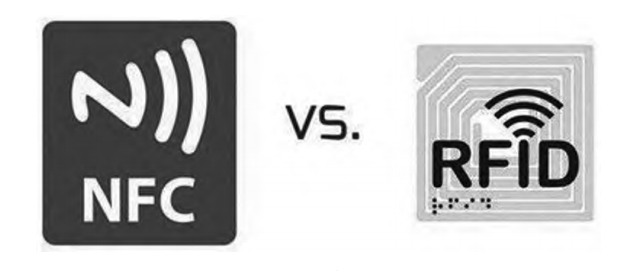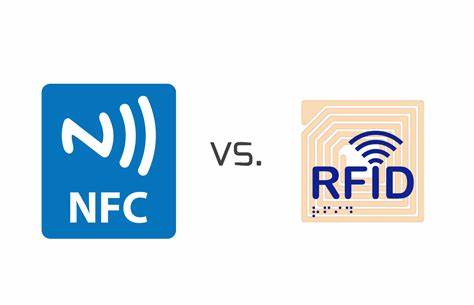 Call at :
+86 18681515767
Call at :
+86 18681515767
 Email :
marketing@jtspeedwork.com
Email :
marketing@jtspeedwork.com
 Call at :
+86 18681515767
Call at :
+86 18681515767
 Email :
marketing@jtspeedwork.com
Email :
marketing@jtspeedwork.com
About Difference between RFID and NFC
The term "Internet of Things" has gradually entered people's lives in recent years, which is promoting the transformation of human society from being "informative" to being "intelligent". Through various network technologies and sensor equipment such as radio frequency identification (RFID), objects are independently identified, connected according to demand, and information transmission and collaborative interaction are carried out, so as to realize the intelligent information perception, identification, positioning, tracking, monitoring and management. People regard RFID technology as the representative of object identification. With the progress of technology, NFC technology, which originated from RFID technology, has played a great role in various fields, among which contactless payment is a great progress.


Radio Frequency Identification (RFID) technology, also known as radio frequency identification. It is a means of communication that enables the identification of a specified target or the reading of relevant data through wireless signals, without the need to create an electrical or optical link between the identification system and the specified object.
RFID technology is mainly through the identification and tracking of tags bound to objects, so as to achieve the purpose of object management. But in essence this is a form of wireless communication, that is, the transmission of data through wireless electromagnetic waves.
What is not the same as conventional means of communication though is its main function, which does not use ordinary telephone calls or even text messages, for example. RFID technology, on the other hand, identifies objects through the use of a tag (Tag). In addition to the tag, the RFID system has a two-way wireless transceiver, called a reader/writer (Interrogator/Reader), which transmits information to the tag and reads the tag's data. RFID technology is therefore divided into passive RFID and active RFID. passive RFID generally refers to traditional passive RFID without batteries, which relies solely on the drive circuitry that receives the electromagnetic waves, and the power and range of the tags do not change. Active RFID generally refers to active RFID tags, and its identification range will be reduced with the change of power. RFID frequency bands and their applications are shown in Table 1. near field communication (New Field Communication), or NFC technology, is developed by the fusion of contactless radio frequency identification (RFID) and interconnectivity technology, which utilises NFC technology to allow systems to communicate with each other over a longer distance. NFC technology is a new technology that allows communication of data between systems in close proximity. Mobile phone payment can be realised by using the mobile phone client through the integration of the functions of peer-to-peer communication devices, such as inductive readers, inductive chips, electronic ticketing, access control, mobile document identification and electronic anti-counterfeiting.
NFC is also a very common communication interface used in current devices. It allows smart devices to exchange information using proximity methods. The NFC system is also able to communicate between a passive NFC tag, and this method of communication is also similar to that of a mobile phone client. This method of communication is also similar to RFID. NFC technology has evolved from RFID technology. In addition to the communication protocol, a data protocol is defined in the NFC specification. In addition to the communication protocol, a data protocol is defined in the NFC specification. On a single NFC chip, an inductive reader, an inductive chip and other points are integrated. reader, inductive chip, and other point-to-point technologies are integrated on a single NFC chip, making it possible to recognise a compatible system in a short period of time. The identification and data exchange with compatible systems can be achieved in a very short time.
RFID and NFC (Fig. 1) devices both use radio frequency signals for contactless data transmission. RFID and NFC (Fig. 1) devices are both contactless data transmission methods through radio frequency signals. The difference is mainly the following 3 points: different working frequency bands, different propagation distances and different fields of use. different.
RFID and NFC technology applications
Contactless payment refers to the use of RF signals on credit and debit cards, smart keys, smart cards or other devices, but also includes the use of RF signals in the field of payment. smart cards or other devices, including smart phones and other mobile devices, through the use of radio frequency identification (RFID). Contactless payment refers to the use of radio frequency identification (RFID) or near field communication (NFC) in credit and debit cards, smart keys, smart cards or other devices, including smartphones and other mobile devices. It also includes payments made on smartphones and other mobile devices using RFID or NFC, such as Samsung Pay, Apple Pay, Google Pay and other mobile banking apps that use contactless payment.
In conventional libraries, due to the complexity of the borrowing and returning process, the heavy workload of inventory and searching, the inefficiency, the disconnect between borrowing management and anti-theft, the low satisfaction of the staff and the low satisfaction of the readers, etc., RFID, as a kind of fast, long-distance, non-contact automatic identification technology, has been more and more widely used in libraries.
From pharmacies to hospitals, RFID can help to itemise stock to ensure quality and prevent waste. It's not just about return on investment, it's about helping to save lives. Avery Dennison has developed a range of high-quality products, including tamper-resistant RFID tags and illuminated labels, that provide vital information to pharmacists, hospitals and patients. These RFID solutions simplify efficiency, improve accuracy and help manage costs while combating counterfeit and substandard medicines.
Categories
New Blog
Copyright © 2025 Shenzhen Jietong Technology Co.,Ltd. All Rights Reserved.

IPv6 network supported